Modernism or Secession
The formation of Modernism, in Vienna, also known as Secession (1897) marked the formal beginning of modern art in Austria, a nation at the time noted for its attachment to a highly conservative tradition.
It was the first movement that gathered artists and designers who were committed to a forward-thinking, internationalist view of the art world. All-encompassing, it embraced and integrated all genres and fields and (highly idealistically), freed from the dictates of entrenched values or prevailing commercial tastes.
Led at the beginning by Gustav Klimt, the Secessionists gave contemporary art its first dedicated venue in the city. With their official journal “Ver Sacrum,” they not only introduced the Austrian capital to their work, but also that of other art movements in Europe.
The Wiener Sezzession group was founded in 1897 by a group of 19 Viennese artists belonging to the Kunstlerhaus school who had left the Austrian Artists Association.
It gave rise to an artistic movement, coinciding with German Expressionism although in Austria it was much more aesthetic and colorful. They defended clarity and harmony. At times, it has been regarded as Austrian or Viennese Expressionism.
His main painters are Gustav Klimt, his young pupil Egon Schiele and Oskar Kokoschka.
The Secessionists’ work provides in large part the visual representations of the new intellectual and cultural flowering of Vienna around 1900, in fields as diverse as medicine, music, and philosophy. Before long, however, internal divisions and difficulties arising from the commercial side of the Secessionists’ work ultimately fractured the group in two: contemporary arts and decoration.
At the end of the 19th century, Vienna, capital of the Austro-Hungarian Empire, was concentrating a series of great changes.
Intellectually, the city was a hotbed of creation: with Sigmund Freud, creator of psychoanalysis and Otto Bauer, political thinker and main exponent of Marxism.
They were new concepts that would have a strong impact on Viennese society. They lived a change of times and were immersed in an atmosphere that favoured artistic creation.
The emblem of the group was Athena, the main goddess of mythology, symbol of reason. She was the daughter of Zeus and Metis, born to adulthood and armed with a helmet by Zeus himself, she was the patron of the first city-state of Athens in classical Greece.
In the following years, artists from various countries in Central Europe, took the example and created the Munich Secession and the Berlin Secession. All three are related to Modernism, typical of the end of the Belle Époque (1871-1914).
They present important differences with their contemporary Art Nouveau and other similar styles such as the Italian Liberty or Floreale or the Spanish Modernism.
Elegance is sought in the Secession. In many respects, due to its break with all of the above, it was a precedent for the Vanguards of the 20th Century.
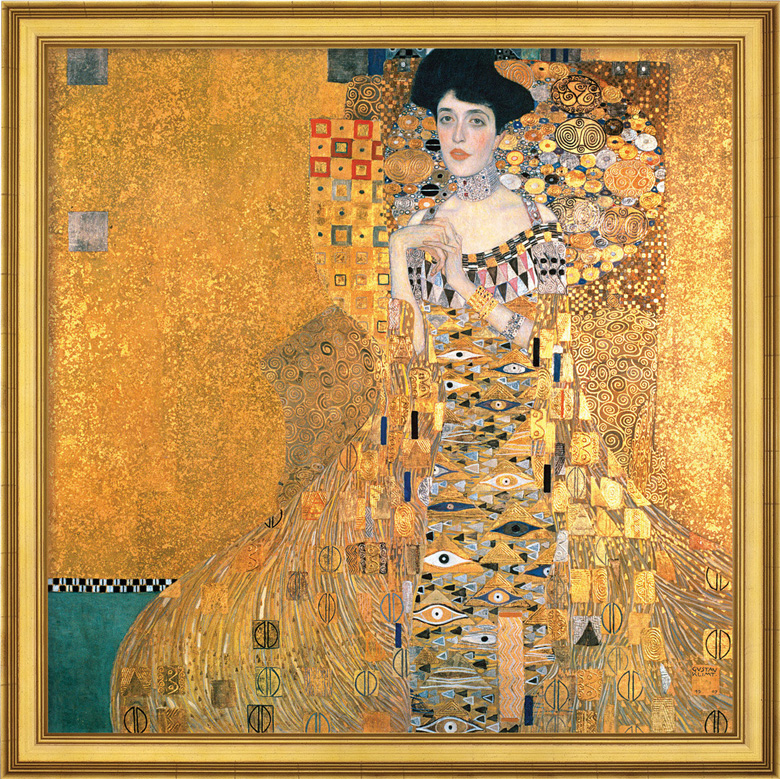
Gustav Klimt
Klimt was born on July 14, 1862 in Baumgarten, near Vienna. He lived in relative poverty during his childhood. His family was immigrant, with little work and social opportunities. His father worked as a goldsmith.
Thanks to his talent, he received a scholarship to study in Kunstgewerbeschule, (School of Arts and Crafts) in Vienna, where he trained as a painter and interior decorator.
Together with his brother Ernst Klimt and his friend Franz Marsch they create a collective called “Artists Company“. They begin to receive modest assignments in addition to working as assistants to their teacher at the School.
In 1880, Klimt began his individual career as an interior painter in large public buildings developing some allegorical themes that later became a distinctive theme of his work. One of his commissions are the frescoes of Kunsthistorisches Museum in Vienna. The work is made up of 40 paintings, distributed between the arches of the building, narrating scenes from Ancient Egyptian to the Modern Age.
In 1890 Klimt meets Emilie Flöge, who will be his companion until the end of his life. Klimt had at least fourteen children during this relationship, although he was also famous for his love affairs.
He led a fairly simple life, completely absorbed by his work and his family. Klimt used to avoid the social gatherings and the intellectual circles of the cafes. He used to wear a tunic or kaftan and sandals when he was at home.
In 1892 his father and his brother Ernst died. The family tragedy also weighed on his artistic expression and marked the beginning of his personal style.
In 1894, Gustav Klimt and his colleague Franz were commissioned to carry out the paintings for the ceiling of the Great Hall of the new University of Vienna.
They commission symbolic representations of four Faculties: theology, philosophy, law and medicine.
Unfinished until the end of the century, the paintings were widely criticised for their radical approach and for the representation that was then accused of being “pornographic.”
Each painting broke different cultural taboos, contradicting the tendency to sublimate reality and only present its most favorable aspects.
Klimt adapts the classic form of allegory and conventional symbolism, but revises it with his own plastic language, openly sexual and with provocative nuances.
The protests did not wait: politicians, personalities from the art world and public morals raised the cry to the sky. The university finally decided not to place Klimt‘s works.
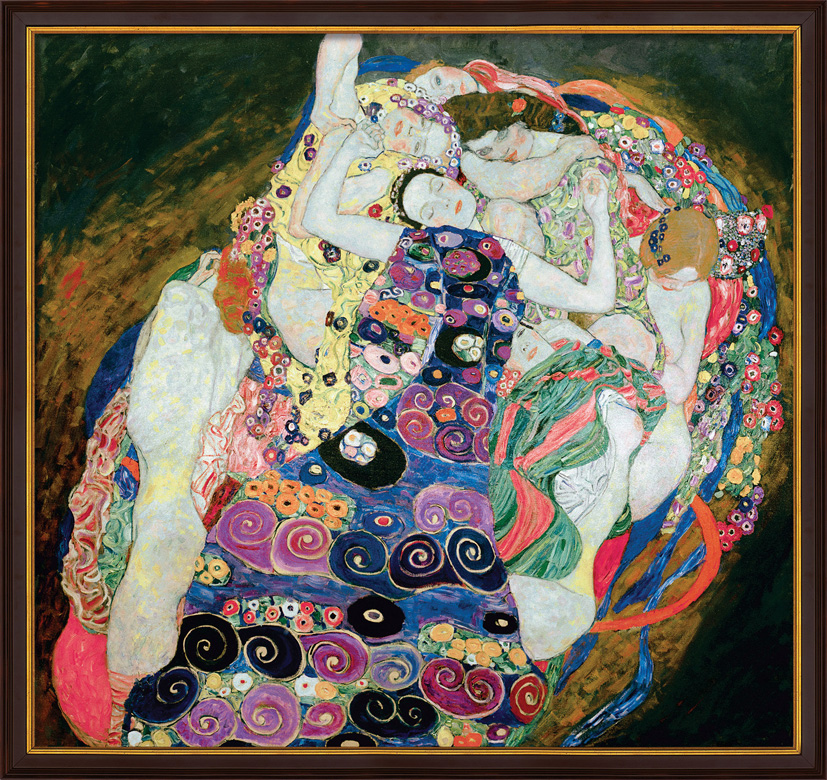
In 1897 Klimt, together with other artists, left the conservative Künstlerhaus (Viennese Academy) and founded a new union of artists with the name of Sezession (which means rupture). Thus arises the Viennese movement whose motto was:
“At all times, his art. To each art, its freedom”
A phrase that described the work and creation of Klimt, strongly influenced by the currents of thought of his time and the result of a desire for total freedom. He insisted to break with the established but not with artistic tradition.
Art historians point to the eclectic character of his style. In his work, we can discover references to ancient Egyptian art, Mycenaean culture, Classical Greece and Byzantine art.
A man of classical training, Klimt did not hesitate to express his enthusiasm for the art of Flemish artists such as Dürer or the Japanese School. Technically Klimt insists on the purity of the line, which gives his drawings a two-dimensional character and expressiveness.
1898 was a key year as he consolidated his position as an artist by receiving the Golden Order of Merit awarded by Emperor Francisco José I of Austria.
That year he painted “Nuda Veritás”, (The naked truth), a provocative work full of disturbing energy. It is a frontal nude of a woman holding an allegorical mirror of truth. The work is crowned by a quote from Schiller:
“If you cannot please everyone with your merits and your art, please a few. Pleasing many is bad.”
It constitutes a whole declaration of principles by Klimt directed, above all, to the most conservative politicians and critics. And it is a profound advance in his personal aesthetic.
Among the objectives of the Sezession group were the promotion of young artists, the exhibition of works produced abroad and the publication of a magazine with works by its members. Nevertheless, the group never wrote a manifesto and did not define with a certain aesthetic direction. There were all kinds of creators in various arts and trends: muralists, realists, symbolists…
They were a project of artistic renewal of the styles of the past to adapt them to the changes of the present.
In contrast to academicism and impressionism, they abandon everyday issues for symbolic and conceptual content.
The group found some government support. They built an imposing exhibition hall, where the group’s artists displayed their works, although they were normally detested by academics.
In 1902 Klimt created the Beethoven Frieze, a mural painting created for the Exhibition of the Viennese Secession that was created around the figure of the composer. It is a great composition with a series of symbolic episodes about the salvation of humanity through art.
The work was the subject of strong controversy. Klimt was accused of reflecting “hallucinations and obsessions” and “impudent caricatures of the noble human figure.”
The disputes and polemics that arose caused the artist’s total estrangement from political power.
Until that moment, he had fulfilled his orders. But this situation of constant criticism leads him to go through a deep personal crisis and withdraw from any public commission.
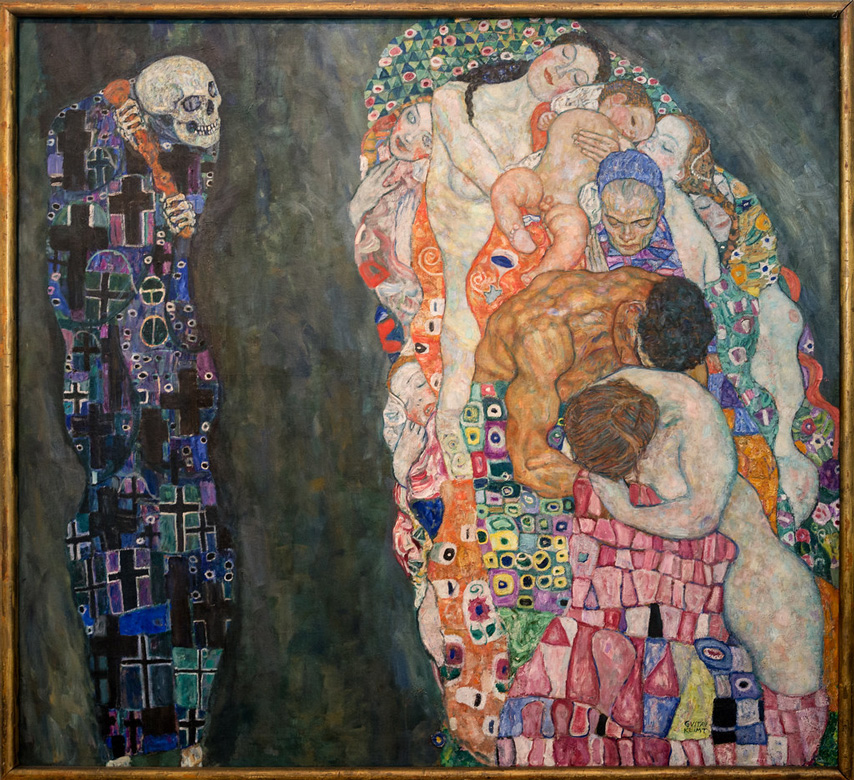
From then on, Klimt renounces being a mere chronicler rejecting official works in a time that the Austrian writer, Stefan Zweig, defined as “the golden age of bourgeois security”.
He specialised in painting his favourite subject: women. Bewitching and irresistible women, ideals of the femme fatale, but with the soul of mythical beings linked to pleasure and excess.
Close to a romantic ideology, Klimt found the maximum inspiration for him in the female nude. His works reflect an intense and sensual energy, in a way they are heirs to the tradition of erotic drawings of Rodin and Ingres.
Around 1903 Klimt began a journey through Italy, visiting Florence, Venice and Ravenna. He discovers the Byzantine mosaics.
After returning from his Italian trip, he participates in the decoration of the sumptuous Stoclet Palace, home of a Belgian magnate. Many of his paintings from this period incorporate gold leaf into the painting. The most important works carried out at this stage were the “Portrait of Adele Bloch-Bauer” (1907) and “The Kiss” (1908).
Gustav Klimt was a break with the conventional and the conservative. The theme of sex and motherhood will occupy relevant places in his work.
The female figure is ambivalent. On the one hand he presents the woman as a beautiful divinity and on the other as a femme fatale, making use of her charms. He transmits from tenderness and elegance to energetic and almost evil women.
The inclusion of a male figure in the painting of The Kiss is something peculiar, since the woman was the true protagonist of most of Klimt’s works, and the man was relegated to a secondary role.
Klimt made portraits of various ladies of Viennese high society. But he was very selective about the assignments he accepted. Once a commission was accepted, he spent long hours meditating on it and the posing sessions were very long.
In 1911 Gustav Klimt was awarded the first prize at the Universal Exhibition in Rome, for his work “Life and Death“.
In 1918, Klimt died at the age of 56, after a heart attack and pneumonia (then mistakenly called the Spanish flu).
Many works remained in his workshop. Some were confiscated by the Nazi dictatorship. During the advance of the enemy troops, to avoid that they became spoils of war, the Nazis burned the castle where they remained confiscated.
Today, Klimt’s works have broken some records at art auctions.
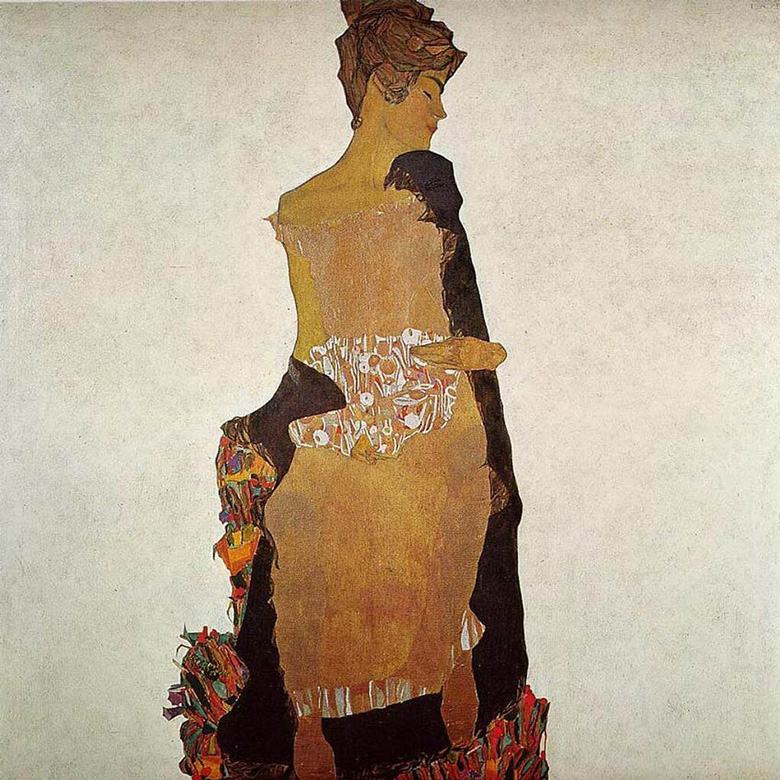
Egon Schielle
Egon Schielle (1890-1918) was the best pupil of Klimt, being almost 30 years younger than his already famous master.
Despite his short life (he died at 28), Schiele produced an astonishing number of works on canvas and paper and is considered the greatest exponent of Austrian Expressionism.
He played a decisive role in the Secession group and his works caused great controversy due to their daring eroticism.
Schiele‘s style is unmistakable: broken and angular lines, long and bony hands, expressive deformations…
Unlike his teacher Klimt, a magician of covert eroticism, adorned with arabesques and beautiful colours, Schiele shows us a stark reality, on backgrounds voids that seem to isolate the figures.
He is not interested in being distracted by the superficial. He only wants to confront us face to face with the instincts, fears and weaknesses of the human being. Expressionism in its purest form.
Despite his short career and life, Schiele is remembered as a prolific influence in early Modernism. His work is known for its dynamic compositions, unrefined sexuality and unusual body shapes which are indicative of the early expressionist style.
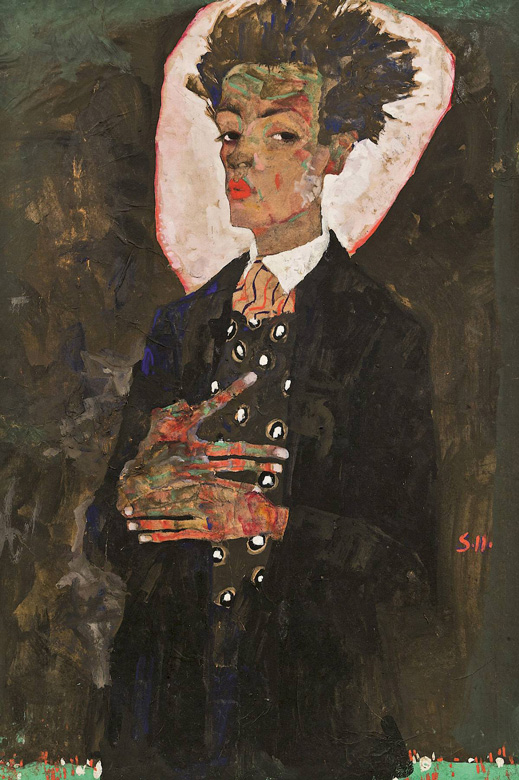
The young man was at odds with art critics and society for most of his brief life. Even more than Klimt, Schielle made eroticism one of his major themes and was briefly imprisoned for obscenity in 1912.
His treatment of the nude figure suggests a lonely, tormented spirit haunted rather than fulfilled by sexuality.
At first strongly influenced by Klimt, Schiele soon achieved an independent anti classical style where his jagged lines arose more from psychological and spiritual feeling than from aesthetic considerations.
His famous Self-Portraits feature a depth of emotion despite the simplicity of the pieces. The artist sometimes sits at an angle, looking at the viewer with a look of skepticism. His head and facial features are enlarged, and the body twisted unnaturally, insinuating a subtle tension that permeates the piece.
The face is rendered with intense color depth and muscular detail, unlike the surrounding clothing and background, suggesting an acutely psychological depth.
Egon died when he was only 28 and we do not really know whether he would have developed from the self-pitying adolescent angst that was the main theme of his work.
His Self-Portraits are his most moving theme, a pathetic and yet powerful exposure of Schiele’s vulnerability. He is mere skin and bone, not yet fully there as a person. He is an unhappy, scrawny youth with a wild and exaggerated expanse of hair. His art shows the raw feelings of his unhappiness.
It may seem too individualistic a view, yet in his hysterical way he is expressing the fears and doubts of many young people. He is wonderful, unsettling and strangely innocent.
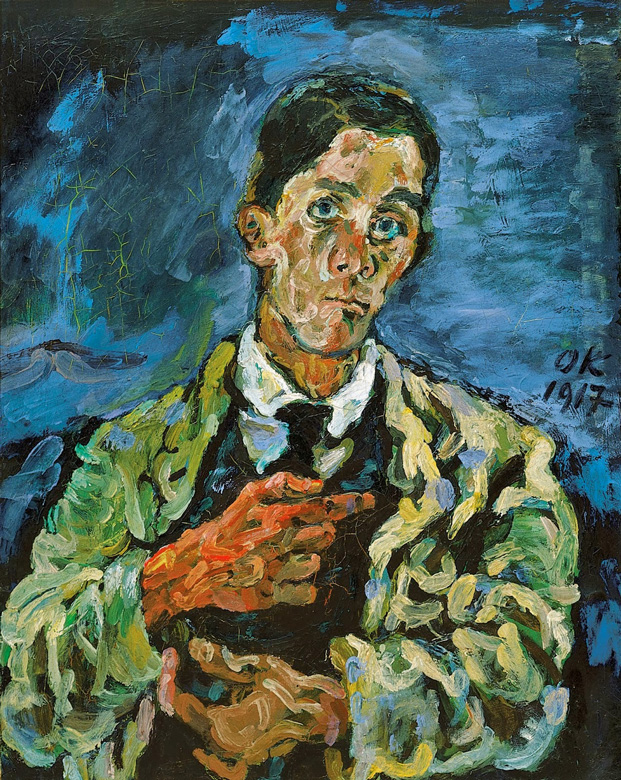
Oskar Kokoschka
Oskar Kokoschka (1886-1980) was the “enfant terrible”, the black sheep of Klimt and Freud‘s Vienna but he was also a great influence for a whole generation of artists.
Son of a humble family dedicated to goldsmithing and punished by the arrival of industrialisation, Kokoschka always believed in omens.
A great fire that ravaged his hometown of Pöchlarn at the same time that his mother gave birth, convinced him that he was called to seek enlightenment and explore a gaze that would allow him to see “the aura that men project in space.”
Each of his pictures, he maintained, allowed the model to know what his appearance and his life would look like over time.
In Austria they accused him of painting badly. He lived with the Secession movement but the radical style and very strong expressiveness of the young Kokoschka was not well received in the artistic circles of Vienna, where he was accused of not knowing how to paint. However, Klimt had described him as “the greatest talent of the new generations.”
In 1910 he emigrated to Berlin, where the mood was more open thanks to the advance of Expressionism. There he managed to make a living from painting thanks to the patronage of the architect Adolf Loos, who acted as the painter’s ambassador among intellectuals.
The great love of his life was Alma Mahler, widow of the composer Gustav Mahler and later wife of the architect Walter Gropius.
She had a long and intense romance with the painter but decided to break up because he felt that the passion was too intense and clouded his will.
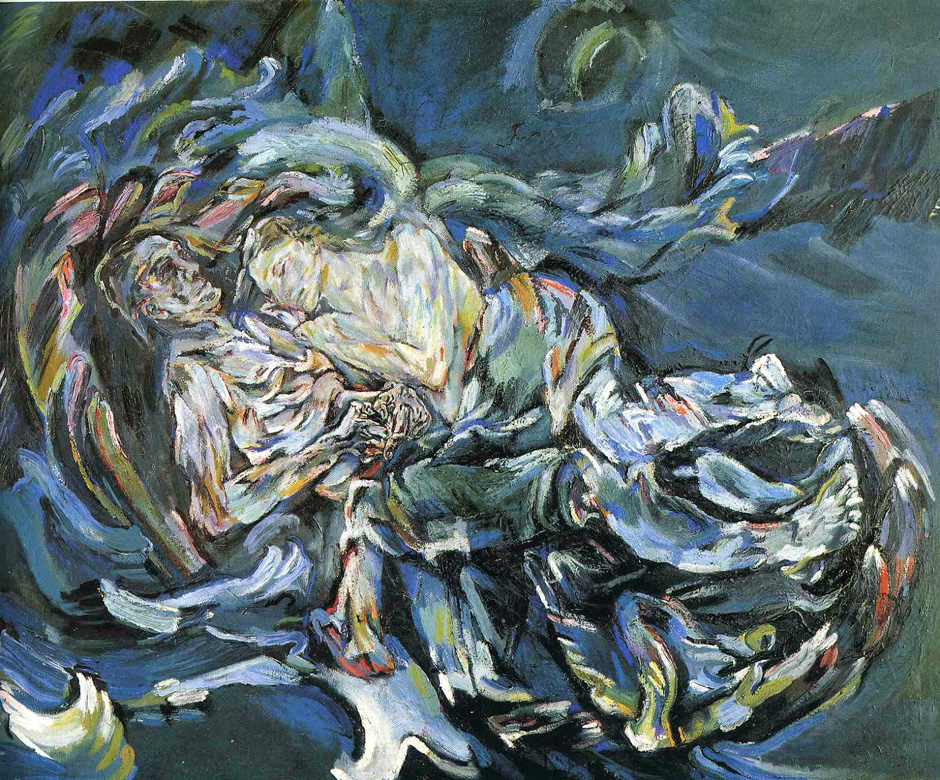
His paintings, laden with layers that crack reality and that were not always to the taste of those portrayed, can be understood as a projection of the dislocation of his time.
The artist was destroyed by two world wars and by the intolerance of the Nazis who accused him as one of the degenerate artists.
Kokoschka had to flee and take refuge from Nazi persecution. He managed to escape and lived in London until he achieved English citizenship. At the end of his life, he reapplied for Austrian citizenship although he never again resided in his native country.
He died with the feeling that his life of dedication to painting and commitment to art had been in vain.
Forgotten and misunderstood, a victim of the barrage of post-World War II movements, such as Pop Art, the old master felt like a footnote in 20th-century Art history.
But today history has evolved and the figure of the painter, one of the most radical expressionists, is cited over and over again as one of the most influential.
Although he shunned the militancy in any art school, he is considered a member of Austrian Secessionism but even more so, an Expressionist par excellence.
Years later, his style had an enormous influence on the London School, especially on two of his most brilliant artists: Francis Bacon and Lucian Freud.
The recovery of the master, born in Austria and died in Switzerland, was consolidated with a large exhibition at the Boijmans Van Beuningen Museum in Roterdam (Netherlands) in 2013.

